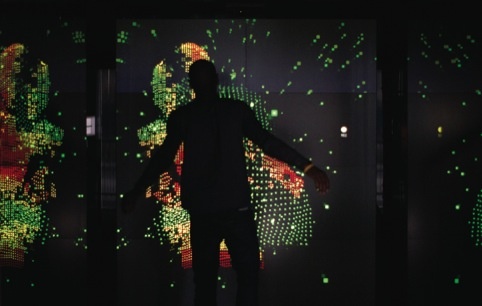Designing for the crowd
I’m at a Designer Breakfasts event, hosted by the Design Museum and Collaborating with the Crowd is today’s panel discussion.

And while the topic is quite a broad one, when conversation turns to ‘the Crowd’, who they are, and how much designers should engage with them, the most interesting lines of debate are drawn.
In the hot seats are AKQA co-founder and chief creative officer James Hilton, strategy director at Saffron Sahil Sachdev, and founder of Little White Lies magazine – and now the consultancy Human After All – Danny Miller.
For the sake of context we are reminded of high-profile rejected rebrands of Everton Football Club, the University of California, Gap and British Airways.

The obvious lessons with the above examples – which you’re probably familiar with – are about listening to the needs of the crowd.
It’s quickly decided that collaboration is for most intents and purposes a grand term, and that with any project simply listening, talking to people and researching will ensure the voices of all stakeholders are heard.
‘Ignore people’s opinions at your peril’ heeds Hilton and indeed this is particularly important in a branding project.
However he also makes the point that when designing with and for technology ‘you need to think about what people will want in five years time – create for where the customer is going an try to push the trajectory.’
Thinking about what they want now is no good when there is a long design, build and approval process before something comes to market.
Hilton talks us through the much-lauded Nike Fuel Band – a good example of how this has worked.
Based on the understanding that Nike sees ‘everyone as an athlete’ AKQA designed the Fuel Band – a wearable technology device – that allows users to measure any kind of activity with a standard metric, Nike Fuel, giving them the means to set comparable goals.

This also leads to discussion of whether tech and digital designers know what people want, and if the crowd knows what it wants – which again comes back to the idea of addressing need, and communicating properly with the crowd.
Hilton also drops in the example of how Instagram, in its infancy was designed ‘with a lot of gamification, which wasn’t working properly.’
It transpired that ‘the crowd’ – Instagram’s audience, just wanted to share pretty pictures. Despite a sizeable investment in the gamification aspect, it was all dropped and Instagram became what it is today.
Hilton says brands and designers should ‘never stop researching’ as awareness of ‘new insights, or new technology’ might cause you to change tack, or even drop a project part way through – which might be absolutely necessary.
Another strand of discussion considers the creative ideas of the crowd and how they can be encouraged ethically.
‘Creatives don’t have the monopoly on ideas,’ says Hilton – a comment which followed Miller’s reference of the campaign work Victors and Spoils has done for Harley Davidson, which relies on crowd-sourcing of the company’s loyal customer base.
Sachdev believes that in branding, trying to find a middle ground between an approach that relies on the insight of designers and a data-driven approach is important. He argues that they need to be reconciled as ‘data can crush insight’.
We couldn’t have had a debate about the crowd without talking about Kickstarter, and Danny Miller spoke with first hand experience of how he used the entirely crowd-reliant – but not really collaborative – business model Kickstarter to help get the book Curious Iconic Craft published.
It’s a big old topic and one that’s seemingly quite hard to rein in but there was lots of food for thought at the Breakfast.
Indeed inspired by today’s debate we’ve been asking some of you, ‘How do you think public reaction is affecting brand design?’ Look out for the results in Thursday’s voxpop.
For more on the Designers Breakfasts series and to find out about the next ones, head to http://www.designerbreakfasts.net/
-
Post a comment




